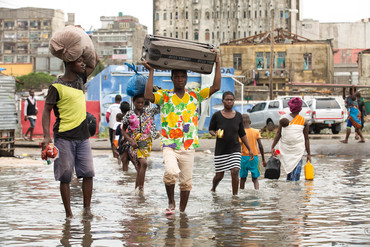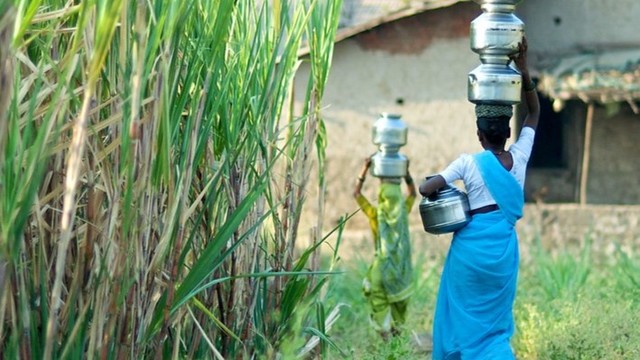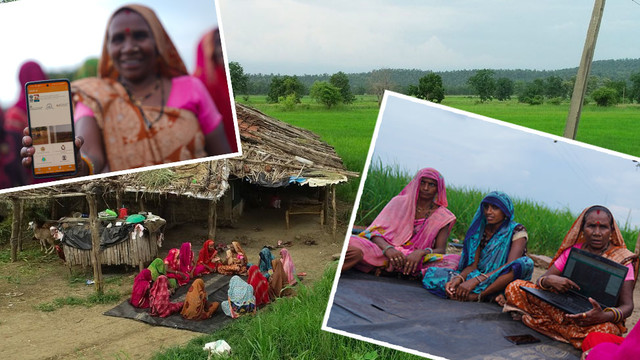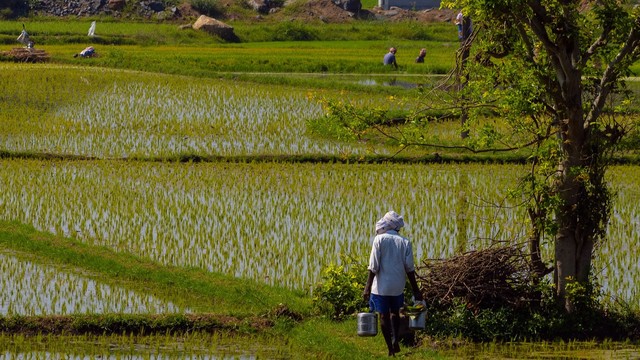Layering interventions is necessary to address loss and damage effectively
Loss and damage due to climate change is happening now and will increase as temperatures rise. Governments and communities must act urgently to address the risks vulnerable people face, but there is little agreement on how to do so in practice. As Nora Nisi explains, layering interventions offers a valuable way of taking action in a comprehensive way.

Earlier this year, the Intergovernmental Panel on Climate Change (IPCC) released a working group report that highlighted increasing instances of loss and damage due to climate change around the world.
Extreme weather events such as storms, heatwaves and droughts are shattering records, displacing millions, and killing thousands. In the face of these impacts, critical infrastructure, services, ecosystems, lives and livelihoods are being disrupted, damaged or destroyed.
But loss and damage arises not only due to individual climate shocks but from an intensifying, cumulative, uncertain and compounding series of risks.
This means that not only are climate change impacts increasing in intensity and frequency over time – breaching the threshold of risks that people can adapt to – but they are occurring over a wide range of time horizons, happening consecutively, overlapping with each other, and interacting with underlying drivers of vulnerability.
What does this look like in reality? Let us consider a smallholder rice farming family in Bangladesh’s coastal Satkhira district. In this region, saline intrusion caused by increasingly intense and frequent storms and floods has made the local soil saltier.
Since rice cultivars have a limit to how much salt they can tolerate, this has impacted the family’s crop yield, reducing their productivity, income and ability to maintain a sustainable livelihood. In addition, this family also experience cyclones, sea-level rise and flooding, each causing its own forms of loss and damage.
These risks and impacts will increase in intensity and frequency with climate change. The family relies on a few assets and has minimal savings. When climate shocks occur, they may not only struggle to cope with the loss and damage caused by these shocks but to recover at all.
Climate adaptation measures like planting saline-tolerant rice cultivars will eventually reach their limits as climate impacts worsen. This is precisely what farmers in the Satkhira region experienced in 2009 – the once effective adaptation strategy of saline-tolerant cultivars became redundant as adaptation limits were reached and exceeded.
So what does this mean?
Loss and damage risks are multidimensional and complex. It is uncertain when and where limits to adaptation will be reached.
The loss and damage caused by one climate hazard may create other forms of risk that exacerbate the losses and damages caused by the original event. As a household adapts to one slow-onset climate risk, a rapid-onset climate hazard may wipe out their efforts. The assets lost or savings depleted to cope with one climate impact may make a household vulnerable to another.
Hence, efforts to address the loss and damage risks faced by vulnerable households and communities in the global South must actively consider the complexity and interconnectedness of different types of loss and damage risk over time.
Tackling loss and damage by layering interventions
No individual measure can address the different forms of loss and damage that a household or community may face as climate change escalates. Addressing loss and damage effectively demands a comprehensive approach that considers the diversity of possible risks and the wide range of possible impacts that may occur over short, medium and long-range time horizons.
This is where the layering of interventions offers a valuable option to policy makers and practitioners.
Layering describes an approach whereby a variety of contextually-relevant interventions are layered to tackle both short-term shocks and longer-term risks at the same time.
This layering approach offers policymakers and practitioners a holistic but flexible approach that can be used to address a variety of different risk scenarios at once, such as: disaster response and recovery to households affected by climate shocks when they occur; disaster risk reduction, anticipatory action and social protection to reduce the losses and damages caused by shocks in the future; ensuring that when the limits of adaptation of one type of intervention are reached, their inadequacy can be offset by complementary measures.
For smallholder farmers in Bangladesh, a suite of layered interventions might include:
- Safety nets such as social protection programmes to help farmers to absorb shocks and better manage loss and damage
- Nature-based solutions and floodproofing to help manage compounding risks, such as floods, winds and storm surges
- Early warning systems, anticipatory cash transfers, evacuation routes, cyclone shelters, trauma counselling, emergency response and recovery processes to address the immediate and indirect losses and damages caused by climate shocks, and
- Planned relocation and livelihood diversification when new limits to adaptation are reached or when the area becomes uninhabitable or unsuitable for farming – including measures to address non-economic forms of loss and damage such as loss of cultural identity, social cohesion or sense of place.
For the process of layering to be successful, measures must be effective, sustainable, and socially impactful. Our new working paper, 'Addressing loss and damage: practical insights for tackling multidimensional risks in LDCs and SIDS', explores the concept of layering in more detail and sets out ten good practice attributes for effective layering.
Local, national and international networks deliver action on disaster risk reduction, disaster risk management, humanitarian relief, disaster response, development, and climate change adaptation, employing a plethora of measures.
However, these networks tend to operate in siloes. To address loss and damage, actors across these networks must begin speaking to one another and begin to think differently. More specifically, they need to start thinking about layering.
- Download 'Addressing loss and damage: practical insights for tackling multidimensional risks in LDCs and SIDS'
- Read more on how loss and damage finance can reach those enduring climate catastrophe
- Read how it's important to understand the history, politics and power dynamics that create vulnerability to loss and damage




